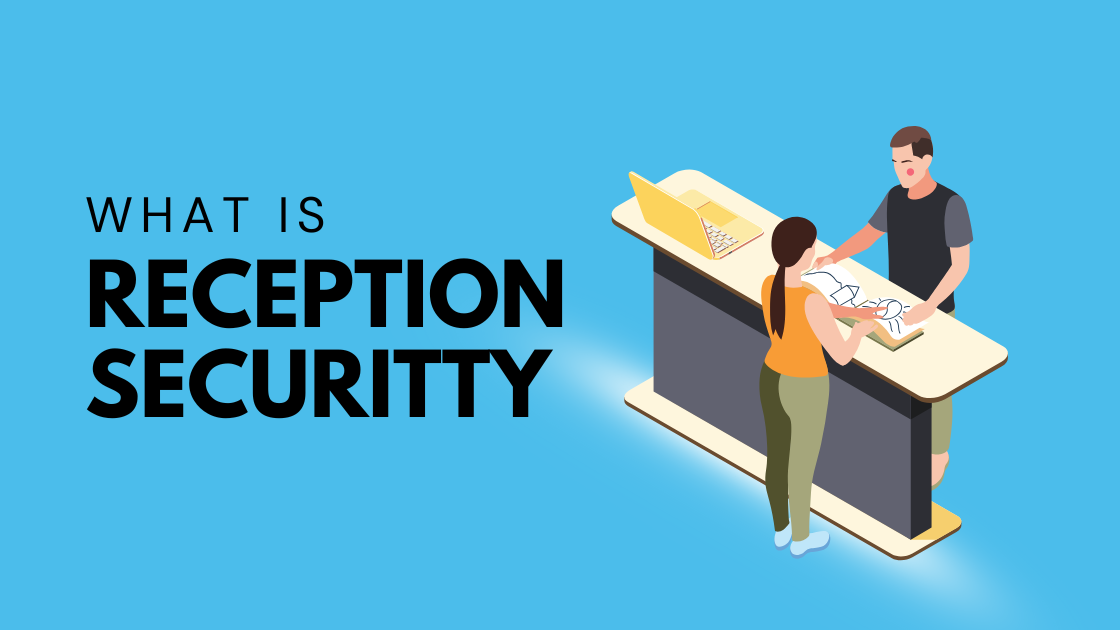
5 Key Qualities for Hiring Reception Security Staff
The 5 Key Qualities for Hiring Reception Security Staff: A UK Business Guide Your office

For years, the office reception area has been a place of welcome, a handshake, a first impression. But the story of security is changing.
A recent survey highlighted a concerning situation: a staggering 75% of organisations experienced a physical security incident in 2024.
The question is no longer if you need security at your entrance, but rather, what is reception security in a world that demands a more vigilant first line of defence?
This guide is your journey to answering that question. We will explore the definitive answer to what is front desk security, breaking down the modern-day risks and introducing the strategies that transform a potential vulnerability into a powerful asset.
We will delve into the responsibilities of professional security personnel and the technologies that form the foundation of effective reception security UK, ensuring your organisation’s story is one of safety, professionalism, and complete control.
So, what is the modern reception security definition?
At its heart, it is a strategic and seamless integration of people, technology, and physical design, all working in concert to protect the main entrance of your building.
Forget the outdated image of a lone guard at a desk; this is a sophisticated, living system designed to control access, neutralise threats, and maintain a calm, professional environment.
Think of it as assembling your three core lines of defence:
This is the most crucial component—the highly-trained, SIA licensed reception guard. More than just a uniform, they are skilled communicators, trained in visitor verification, conflict de-escalation, and rapid emergency response.
To ensure their absolute integrity, all professional security personnel in the UK must be screened to BS 7858 standards. This is the UK’s official, in-depth vetting process for security roles, confirming a candidate’s history and integrity to ensure they are completely trustworthy.
Technology is a powerful force multiplier in this story. The key lobby security components are no longer science fiction; they are essential tools.
This is the smart design of your environment. It includes physical deterrents like security turnstiles, Bullet-resistant glazing at the desk, and a layout that naturally guides every visitor towards a single, controlled checkpoint.
The importance of reception security extends far beyond simply preventing unauthorised entry. In an era where 26% of business premises are affected by crime, a secure reception serves as a powerful statement.
It demonstrates a proactive commitment to safety, which enhances brand image and significantly boosts employee morale and confidence.
For any organisation asking why need front desk security UK, the benefits are tangible and multifaceted:
In the post-hybrid work landscape, where office footfall can be unpredictable, a dedicated focus on building reception safety has become an indispensable part of corporate governance.
Aspect | Reception Security | General Building Security |
| Focus Area | The building’s primary entrance, lobby, and immediate surrounding area. Prioritises visitor and staff interaction management. | The entire building perimeter, internal floors, access points, and assets. Focuses on overall asset protection and intrusion detection. |
| Primary Tools | Visitor Management Systems (VMS), access control gates, SIA licensed reception guards, CCTV with facial recognition, and de-escalation training. | Perimeter fencing, patrol guards, motion sensors, alarm systems, comprehensive CCTV networks, and overnight monitoring. |
| UK Regulation | Strong emphasis on SIA licensing for personnel, GDPR for visitor data, and public interaction protocols. | Governed by broader security standards, including BS 7499 for security guarding services and data protection laws for surveillance. |
Every story needs a villain, and in the narrative of your reception area, the threats are varied and cunning. Understanding these reception area risks is the key to defeating them. The main office entrance security challenges include:
These front desk threats UK businesses face are the antagonists of our story, requiring a security hero who is always vigilant.
Here is the hero of our story: the modern reception security professional. Their duties are a dynamic blend of gatekeeper, diplomat, and first responder. The core reception security guard duties are not passive; they are an active, moment-to-moment mission of protection.
These key lobby security personnel responsibilities form their daily purpose:
In the UK, these heroes are certified. It is a legal mandate for individuals in SIA licensed front desk roles to hold a valid licence from the Security Industry Authority (SIA). This isn’t just a certificate; it’s a legal requirement ensuring your security professional has undergone rigorous training, identity checks, and criminal record screening for this critical position.
In many organisations, this role overlaps with concierge security, blending professional protection with a welcoming front-of-house presence. This hybrid approach ensures that while staff and visitors feel genuinely safe, they also experience a polished, positive first impression of the business.
Get in touch with 2015 Security Services Ltd today for a FREE quote on professional Reception Security services!
Every hero needs a plan and the right tools. An effective security strategy is your battle plan, and the most successful reception security best practices weave people, processes, and technology into an unbreakable defence.
The Winning Strategy (Procedural Best Practices):
Asking “what is reception security” is really asking how an organisation protects its most visible and vulnerable point of entry. It is no longer a passive, administrative task but a proactive and essential security discipline..
As this guide has shown, it is a strategic fusion of people, technology, and processes designed to protect a business from rising confrontational threats. A well-executed strategy, encompassing risk assessment, SIA-licensed personnel, and compliant technology, is the definitive summary of reception security.
By investing in enhancing office entrance safety, UK businesses not only defend their assets and staff but also fortify their brand reputation, creating an environment where employees and clients feel genuinely secure.
A UK reception guard manages building access by verifying IDs, monitoring surveillance, and issuing passes. They also serve as a first responder and customer service ambassador, and must hold a mandatory SIA licence.
Yes, in most cases it is a legal requirement. The Private Security Industry Act 2001 requires an SIA licence for anyone whose duties include controlling access to a property.
By using a digital Visitor Management System (VMS). These systems are built for GDPR compliance, with features to encrypt data, manage consent, and automate data deletion, ensuring your process is compliant.

The 5 Key Qualities for Hiring Reception Security Staff: A UK Business Guide Your office
Copyright © . All rights reserved.